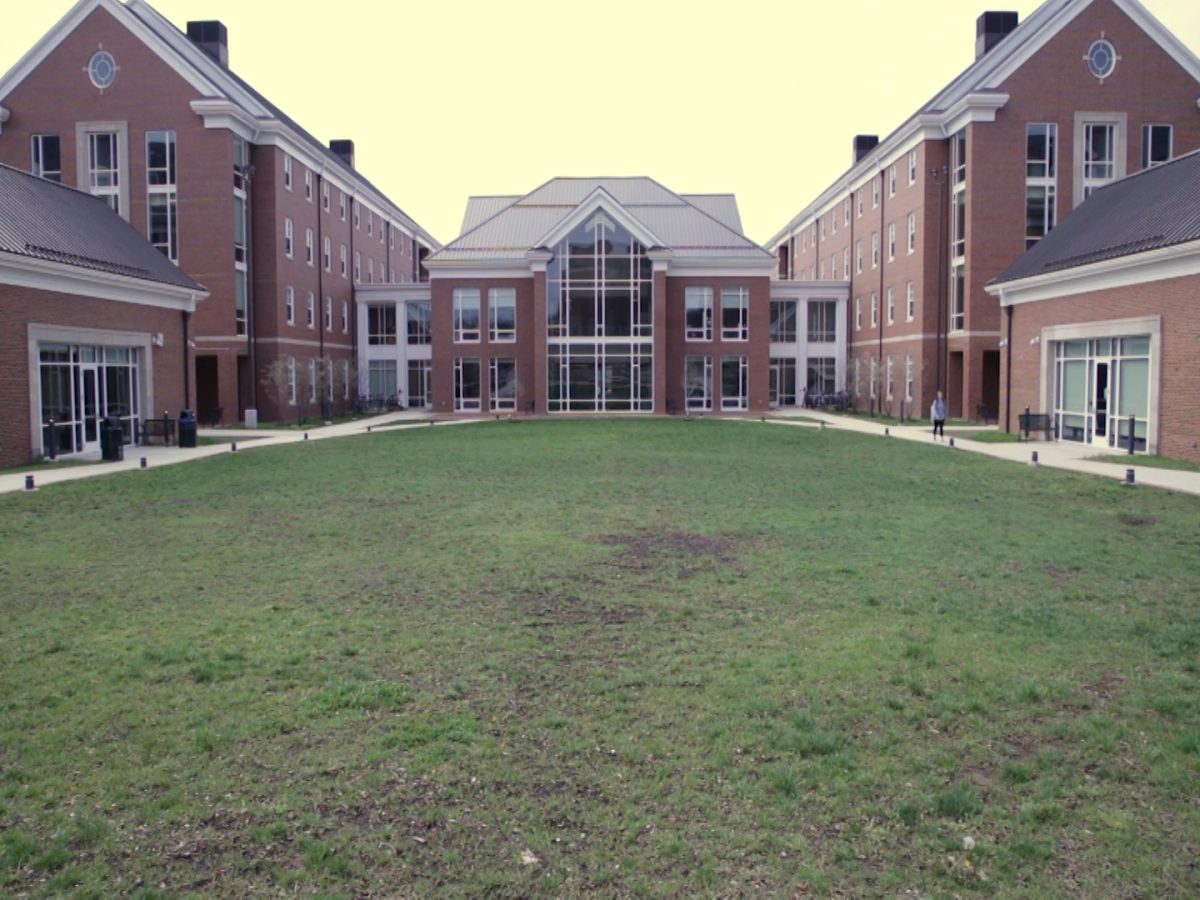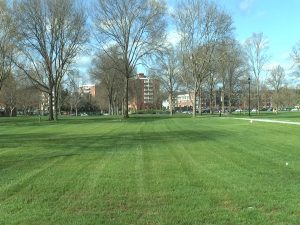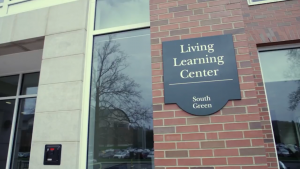
Ohio University Modernizes Residential Life
< < Back toIn today’s competitive world of higher education it can be difficult for soon-to-be high school graduates to decide which college is right for them. It can also be difficult for those potential colleges to set themselves apart from the competing schools, as the number of potential high school graduates dwindles.
Located in an isolated area in southeast Ohio can be a difficult position for Ohio University when it comes to attracting potential students. As a residential campus, OU administrators know that they have to do more than promote the academics if they want students, and their families, to spend nearly 100,000 dollars for a four year degree. Helping students realize what this campus has to offer can be difficult.
Making a Home on Campus
“How does living on this campus differ from being at home?” Candace Boeninger, Director of Undergraduate Admissions, says they ask themselves and students. “And then help them really make a choice to understand ‘how can Ohio University be that college home for them for four years,'” she says.
Among all division one public colleges in Ohio, Ohio University has the fourth highest acceptance rate at 75%. Accepting the students is only half the battle now. Convincing the students, along with their parents, is becoming more challenging. In the fall of 2018 an incoming freshman will paying more than $24,000 for tuition.

One way O.U. is drawing in more students is through its residence halls. With new buildings and dorm-styles, the university hopes to provide what students and parents are searching for when they look for a comfortable living situation on campus.
“We understand that when they are making an investment in the residential experience that sometimes it’s over and above what they might otherwise choose,” Boeninger said. “Whether that be going to a lower cost institution or an institution closer to home that allows them to commute or perhaps enrolling in a community college in their local area.”
Understanding Students
In order to understand what students want in a dorm experience the university researches potential students and their tendencies. Executive Director of Housing and Residence Life Peter Trentacoste seeks the input of students to better grasp their needs and wants.
“Ultimately, for us, as I’ve said, I get to work here, but I don’t live here,” Trentacoste said. “So having student feedback is absolutely critical for us to look at any project or renovation.”
The Department of Housing and Residence Life focuses on the students on campus. This includes budgeting, planning, and enhancing the students’ overall quality of living.
Throughout the surveying process the department also hired students and went to student senate meetings. With the information gathered the department realized what the students want from residential life: suite-style rooms, more private and non-community bathrooms, and spacious greens.
With these findings the Associate Vice President for University Planning, Shawna Bolin and her team, turned these desires into Housing Phase 1.
“Housing Phase 1 was replacing several South Green buildings with new facilities,” Bolin said. “Four facilities grouped together with a central living center.”
Through Housing Phase 1 the residential halls Tanaka, Luchs, Sowle and Carr were created. These new dorms feature suite-style rooms with high ceilings and private bathrooms. Compared to the old traditional dorms, the new suite-style resident halls offer amenities that the old ones cannot compete with.
https://youtu.be/4OwFCT7Dq8E
This project, which cost more than $110 million dollars, is the new standard the university hopes to integrate campus-wide. The new suite-style rooms are more than 250 square feet, not including the shared bathroom. That’s more than a hundred square feet larger than the average dorm room in the older residence halls.
Ohio University’s Strive for Sustainable Dorms

These new residence halls are not just eye-catching for new and touring students. Housing and Residence Life is also proud of their part in reducing Ohio University’s carbon footprint.
“The main focus of this project was to make a building that would last the test of time and a real high quality building and while we’re doing that we’re following as many sustainable principles as we can,” said Trentacoste.
Now not only can the university provide high quality housing for it’s undergrads it can also promote that their residence halls are environmentally friendly.
Former university President Roderick McDavis approved the climate action plan. This plan established the guidelines that the university follows with new construction projects today. They used a program called the Leadership in Energy and Enviornmentl Design (LEED).
LEED evaluates the environmental performance of a new building or construction project through a point-based system.

“A lot of projects that are going forward, the standards are starting to catch up,” Trentacoste said. “And LEED had been the driving force to some of these different standards to try and make buildings more sustainable when they are built.”
What’s Next?
Housing Phase 1 is just the beginning of change in the rewsidential life experience. Housing Phase 2 is an extension of Phase 1. After learning from Phase 1 the university is examining what problems might be faced in Phase 2.
Phase two is projected to cost $2.4 million. It is highlighted in Ohio University’s Six Year Capital Improvement Plan (CIP).
“One challenge would be ‘what do students want?’ and how do we create that environment while trying to intro that we’re monitoring what that investment cost is,” Shawna Bolin said. “Where we landed with the pod style is really a nice blend for what the students asked for and what would be a financially sustainable project.”
Phase 2 also inclues more open, green space on South Green. The university plans on tearing down nine additional dorms. Once the space is created the school will begin to build new residence halls, providing future students with a modern, environmentally friendly, suite-style rooms similar to the news ones.
With all of these new dorms Ohio administrators hope to be a more attractive campus for potential students. Being environmentally friendly is an added bonus they hope will be a selling point.
“Being able to help the environment and sustain that environment for students, despite how busy my work is,” Trentacoste said, “that’s the stuff that gets me up everyday. I get to have a part to play not for here and now, but will stay standing for a very long time.”

